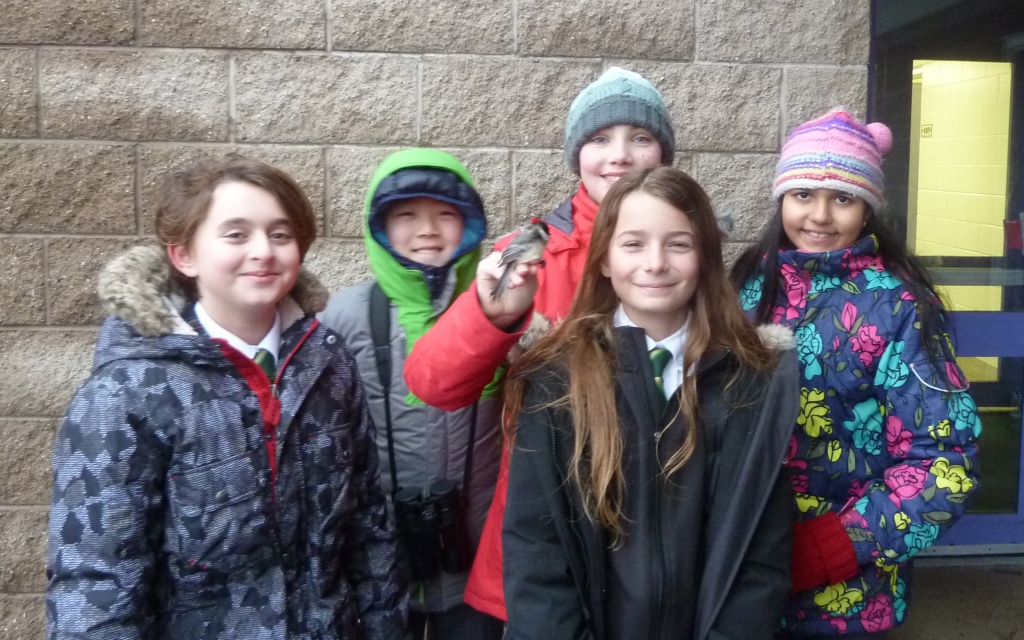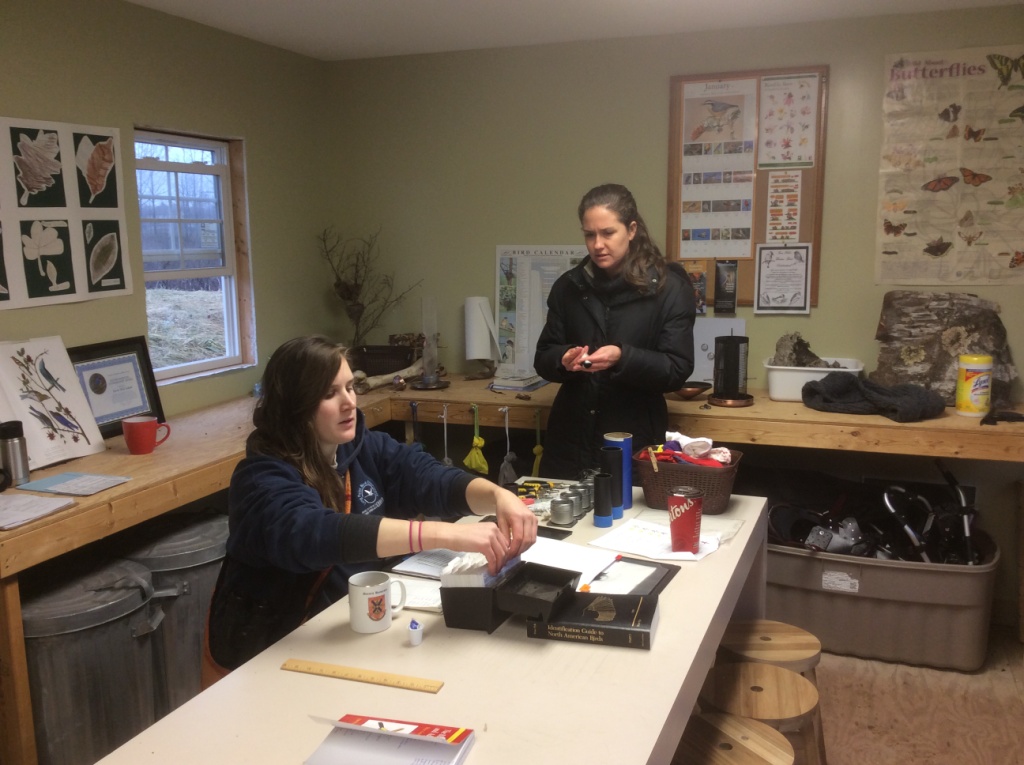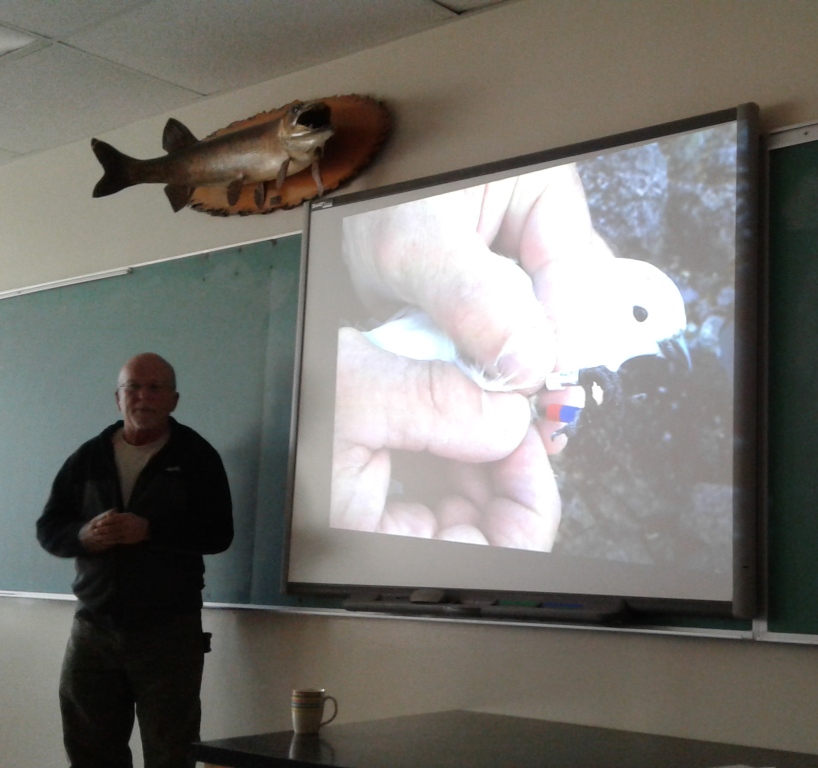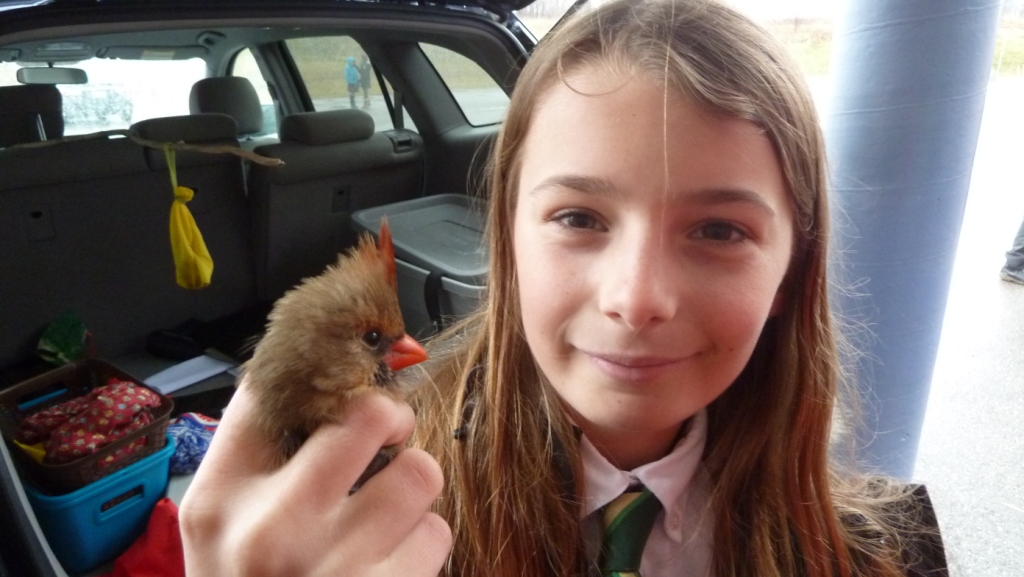
There is a large contingent of Black-capped Chickadees around both the Burlington and Oakville campuses – most of which are now banded.
Now I don’t have the facts right at my fingertips (and I don’t want to sound too much like a geezer….you know: “when I was a boy”, and all that) but I can’t remember a January like this. So much like the middle of March. And it certainly has fouled up my plans. Usually I’m off to some challenging, warmer climes through this period but I thought I’d stay put this year to a) do some X-country skiing and b) do my share of banding Snow Buntings (Nancy Furber has done the lion’s share over the past couple of years). And it looked like it was going to be a banner year….for Snow Buntings that is. Up to the warming trend we had banded 274 Snow Buntings. In the past we NEVER got them in December or early January. This was going to be the year. But as soon as the snow cleared out, so did the birds. In fact, one pundit wondered if they might turn into Mud Buntings. And, of course, there’s not a damned thing you can do about it – just wait and see.

Janice (left) and Katherine processing a bird in the new banding lab/field studies building at the Burlington campus.
Waiting and seeing just isn’t my bag; too restless I guess. I’ve done a little banding at Ruthven while keeping the feeders full. But the most interesting activity has been going to Fern Hill’s Oakville campus to both band and observe. Fern Hill has 2 campuses: one in Burlington and one in Oakville. “Field studies” (which includes banding) is relatively new in Oakville but has taken off. In some ways it’s a bigger challenge than at the Burlington campus. For the moment anyway the Burlington campus is surrounded by relatively wild habitat (relative to well-developed Burlington). Birds in the area can readily use the feeders there and get to them along brushy, protected “corridors”. So they get lots of birds and a nice variety. Oakville’s campus lacks that habitat, at least immediately adjacent to it.
One of the ongoing projects of the field studies program is to increase the amount of wild, bird-friendly habitat; areas of lawn have been set aside from further cutting, shrubs planted, feeders put up. This will take time to develop but it is interesting to see the impact so far on birdlife. Backing the campus is a large cemetery and behind that is a nice forest and river valley – still pretty wild. But the nearest point is still over 100 meters from the campus across open country. On the other side of the busy 9th Line fronting the property is a small woodlot. And on either side there are open grassy fields, as yet undeveloped (and home to Bobolinks and Savannah Sparrows in the breeding season).

Each month I give a noon-time talk about some of my bird “adventures” – the big fish above my head does NOT figure into this one. -K. Paveley
But we’re the only feeders in a pretty wide area and we’ve begun to pull birds from distant territories to take advantage of them. I’ve seen birds fly at least half a kilometer to get to them. Black-capped Chickadees lead the way – since September we’ve banded over 40 of them. And where chickadees go others are soon to follow. This is a good year (so far) for House Finches and we’ve banded over 44 of them – 30 on one memorable day alone. (So far I’ve seen only one case of conjunctivitis, the disease that causes their numbers to crash.)
One of the most rewarding things though is the response of the students to what we’re doing. There’s now a very enthusiastic group of “Young Ornithologists” at the campus (both campuses) and a very supportive staffing team. This has been a good alternative for me……but don’t get me wrong: I’d like to be banding Snow Buntings!
Photo Gallery:

Isabella with a female Northern Cardinal – which she removed from the bird bag without getting wounded.
Rick






